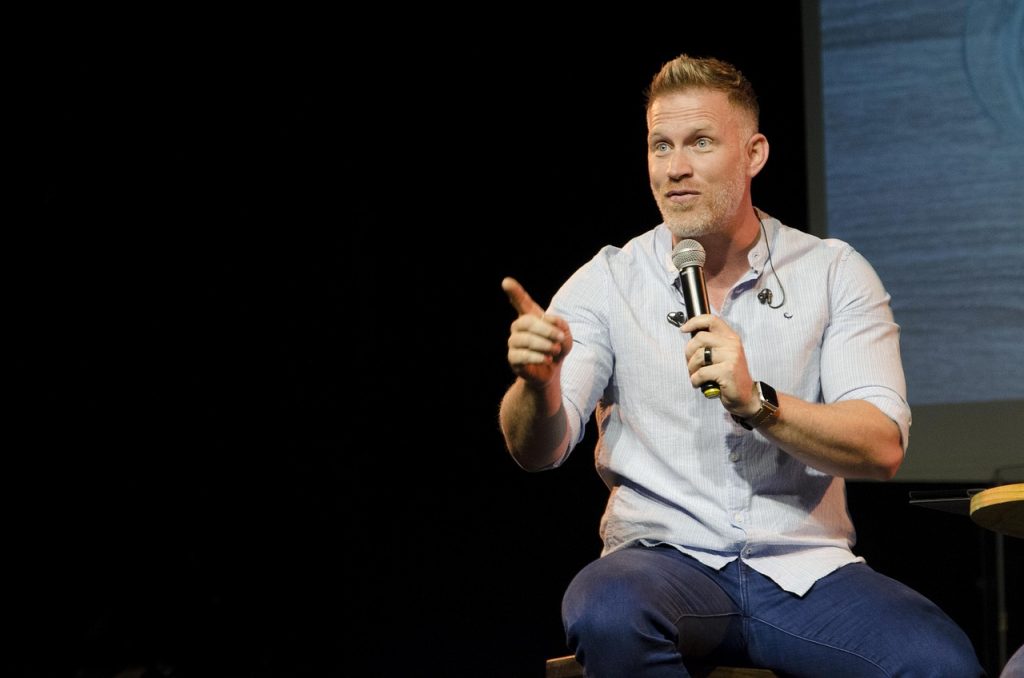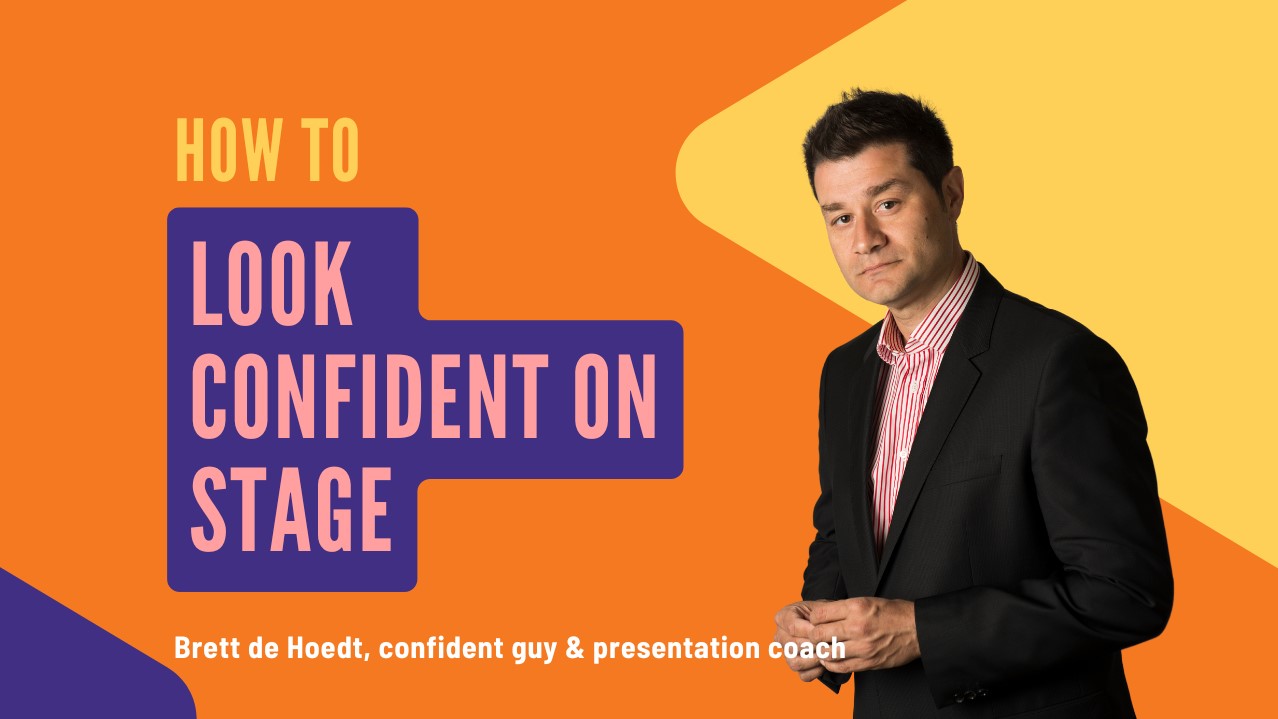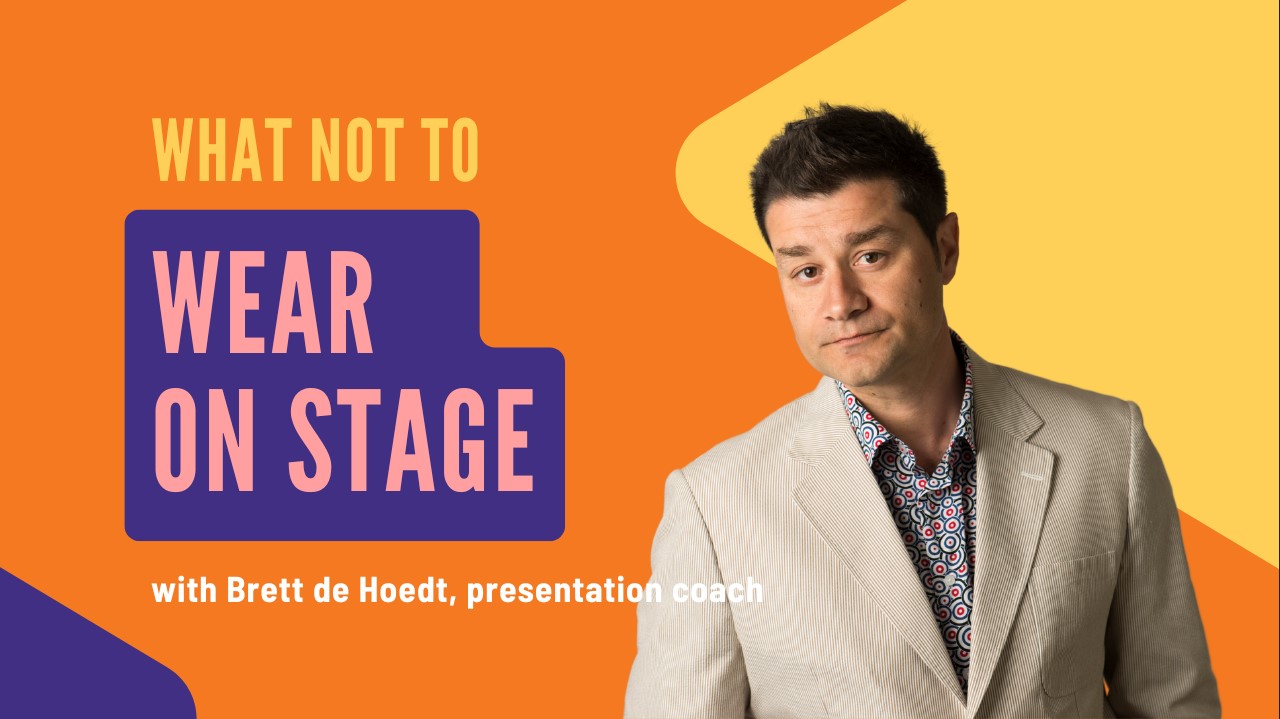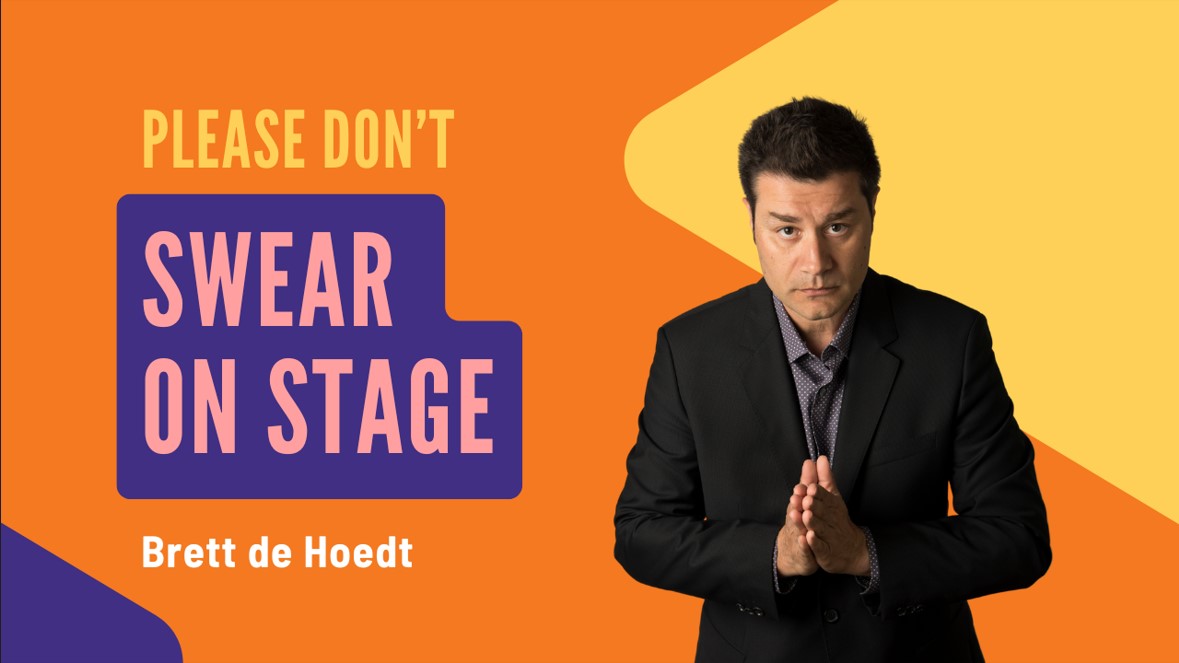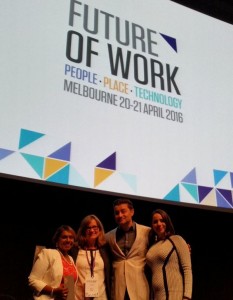
Have you, with your professional reputation on the line, ever asked a room full of strangers to turn to the person next to them, extend a hand and introduce themselves with the line: “Hi I’m Troy and I’m a bisexual.”?
Thought not. But that’s exactly what happened at yesterday’s Future of Work conference. That’s quite an audience participation exercise wouldn’t you agree? We’ll explain it later.
Over the last six weeks or so Brett has been working with three speakers – Varina Paisley, Sylvia Roux and Bamini KPD Balakrishnan- who yesterday shared a session at the Future of Work event at Melbourne’s Federation Square. Each is an emerging leader in their field, with experience in more formal and academic presentations though mainstream conference presentations on this scale were newer to them.
The Future of Work event is quite a big deal with international speakers drawn together by the Centre for the Workplace Leadership, which is part of the University of Melbourne. Lots of smart high-powered, good-looking people gather to discuss people, place and technology as it relates to our working lives. Brett was fortunate enough to emcee the conference last year and this year was tapped to help the trio of speakers make the transition from academic to mainstream conference presentation.
Here are a few observations:
Big improvements happen: it is remarkable how deliberate investment in your presentation skills improves performance. The difference between our first and second session, held over two consecutive days six weeks ago, was remarkable. The best public speakers are those who are willing to deconstruct their presentation and prioritise the experience of the audience. A willingness to try new things – such as polling the audience or launching immediately into your presentation – is vital.
In the last six weeks however real life intervened. Our ‘dress rehearsal’, held less than 24 hours before showtime, was invaluable. Performances were, we all agreed…underpar.
Two of the presentations, planned to be 22 minutes in duration were suddenly completed in 12 minutes. Close to 50% of the content had been forgotten! Unprecedented. Without the dress rehearsal, this could have happened in front of a live audience. Some rust had settled in and so it was a prime opportunity to get back into the right headspace.

Listen to Andre: You will find few sporting references in the Hootville canon. Andre Agassi is an exception. His advice – to train at an intensity as close as possible to the intensity required on match day – is valuable. It is easy to get comfortable with rehearsing at a low energy level and stopping for any mistake or interruption. Get used to delivering your presentation at 100%. Get used to recovering from a memory lapse and delivering your presentation in your fancy clothes as opposed to your pyjamas. Get used to pausing to allow your audience some white space and speaking at a volume and pace different to those you use every day. By the way Agassi’s autobiography Open is one hell of a good read.
Apples and oranges are different: There is a significant difference between presenting in more homogenous environments such as academia and a broad, mainstream event such as the Future of Work. It is not an easy transition to make for speakers who have had their noses in data and dissertations for years. It takes a willingness to try and fail and change KPIs.
Working without a script is tough: all three speakers chose to work without any notes whatsoever. This was not on Brett’s insistence. While being note-free is the gold standard, working without so much as an index card in one’s hand does force speakers to devote a lot of energy into simply remembering their script. It is totally acceptable at any level of presentation to have notes. No audience will hold this against you, though reading a speech word for word is utterly unacceptable. Of course visual presentations can act as a jog to your memory, inspiring you to recite a passage of your presentation confidently but not word-perfectly.

Foreshadowing: anyone who has ever watched a movie, read a book or listened to a skilled storyteller knows the power of foreshadowing. It builds anticipation, maximises attention and gives the speaker control.
Foreshadowing is a particularly showbiz characteristic. It does not come naturally to people who present in a very straightforward and linear manner. Here’s an example of foreshadowing:
“I spent two years researching 800 workers in one financial services company investigating why some workers truly believed in their employer’s mission and others frankly saw their job as nothing but a means to an end. I could talk all day about how to create a positive, resilient, passionate culture but with so little time I’ll simply share my top three tips to dramatically improve your organisation’s culture. But before I do that, can I ask you a question? Are you even measuring how your workers perceive your corporate culture?”
You have already created an appetite for your top three tips even though you might not share these for quite some time. Regardless, when you get to them your audience knows that they are your top three tips and you will have gained the maximum amount of attention for them.
Leave a little whitespace: every graphic designer knows about the value of whitespace. Leaving some space uncluttered gives a sense of calm and ease. The more upmarket the publication the more whitespace we see. It’s no different with spoken presentations. Give people time to consider what has been said, imagine a scenario or simply absorb information. Deliberate pacing and the occasional pause conveys confidence – whether you feel it or not. We’ve all been in situations where we’ve felt anxious and as a result prattled on without cessation. Try not to repeat this on stage.
Time is limited so cut to the chase: our Future of Work trio were allotted 22 minutes each with some question time after all three presentations were complete. Brett recommended that all speakers leave their opening thankyous and acknowledgements to the end. The opening minutes are when you have the maximum amount of attention from the audience – don’t blow it on thanking the organisers or your public speaking trainer.
Time is limited so prioritise: our speakers could have spoken all day – such was their knowledge of their various fields. There was no way to do justice to everything they had to say in 22 minutes, particularly when you subtract the amount of time required to simply explain some of the key concepts and background that gave context to each presentation. Brett emphasised the need to deliver the audience some value and take-home messages at the expense of other content. All three speakers obliged in spades.
Keep it simple: it’s not cool to say so but if there is one presentation software that every venue can run it is erstwhile PowerPoint. Alternatives to this industry standard can create complications for you. Complications that tend to arise at the very last minute. Similarly, running presentations directly off your laptop or from the cloud creates awkward challenges for the tech staff. Yes, it’s annoying to have to prepare and send your presentation in advance but it a gets the job done and minimises technological dramas. Some tips on PowerPoint above.
Observations for dress and earring wearers of all genders: we take pride in not telling speakers what to wear but two unusual dramas made themselves felt in our 90 minute session. One speaker wore a dress with no belt or pocket which meant that she was not able to hook her microphone battery pack onto anything. This meant that she had to hold the pack throughout her presentation with her other hand holding the clicker. All three speakers wore Madonna headsets which tapped against two of our speakers earings which was a percussive distraction we had not anticipated.
The show must go on: is the fundamental showbusiness tenet. Regardless of the size of the audience, technological breakdowns or lack of sleep one must do do one’s voodoo. Varina, the first speaker in our trio, proved herself a trooper when she calmly waited for the wrong presentation to replaced with her own. This awkward interruption could easily rattle any speaker. Don’t let any interruption interrupt you. That’s showbiz.
Set-ups matter: One of our speakers twice asked the audience to spend a minute considering a question and jotting down their thoughts. We worked specifically on how to best explain what our speaker wanted the audience to consider. It underlined to me that any exercise you give the audience has to be clearly explained if it is to be effective. In our case it was.
Voices matter: it pains us to admit it but all things being equal a good voice is an advantage. Note that voice concerns matter only when you’ve got your content, audio-visual, audience engagement and stagecraft in order. We can’t all be Morgan Freeman but we can all pace ourselves, speak clearly and deliberately and work on keeping our pitch a little low. Rightly or wrongly a voice that is pitched high can begin to grate on audiences. Readers who wish to add another level of complexity should try to vary volume, tone, pitch and pacing. Please note this is the absolute icing on the cake. You would be better off honing your stories, examples and means of audience engagement.
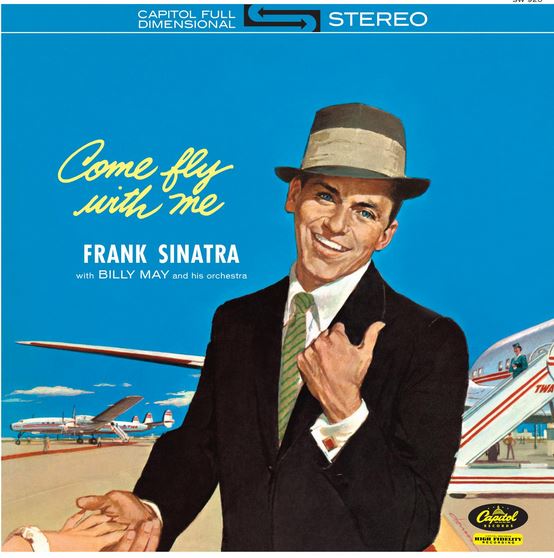
Refer: A couple of our trio referred to points made by previous presenters from earlier in the day. This is always a great move as it shows you are as interested in the content as the audience. It shows you give a damn.
Test everything: no matter how obliging or negligent the technicians on site appear, ensure that your microphone, audio-visual and other practical concerns are met. Don’t just try the clicker and microphone while standing next to the technician – walk the stage with them and see if they work at a distance. Go through the slides of your presentation to make sure that they all show and that your groovy transitions are grooving as expected.
Flick the switch to vaudeville: we have spoken repeatedly about the need to engage audiences with an exercise, a poll, a hypothetical. It’s only fair to audiences and it keeps the energy high. Academics do not traditionally do this. Brett was delighted to see his speakers take the opportunity and engage their audience.
Varina, addressing diversity in the workplace, gave us a fictional case study of ‘Troy’ a middle-aged executive who is bisexual. Varina wanted to challenge the notion that being non-heterosexual in the workforce is straightforward in 2016. We decided that she should conduct a quick piece of audience participation by having audience members turn to a stranger and introduce themselves with the line: “Hi. I’m Troy and I’m bisexual.”
The little exercise served several purposes: it created a giggle in the audience, it showed that it is a big deal in 2016 to explain that you are not straight and as a result gave more control to Varina. Varina had progressed from telling to demonstrating.
Our thanks to Varina, Sylvia and Bamini for being so willing to try something new on the advice of someone so less educated. Our gratitude too, to the Centre for Workplace Leadership, particularly Angus Blackman for the opportunity.
Need some training for your staff, event speakers or yourself? Find out more.

